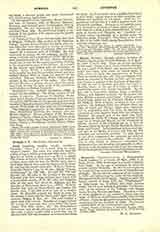

Coxcie, MICHIEL, Flemish painter, imitator of Raphael, known as the Flemish Raphael; b. at Mechlin, 1499; d. there 1592. There are several spellings for his name: Cocxie, Coxcie, Coxis, Coxcien, Coxcyen. He was a pupil of his father, and afterwards studied under Van Orley, with whom he visited Rome in 1532, where he made the acquaintance of Vasari. There he married his first wife, Ida van Hasselt, with whom he returned to Mechlin, in 1539, and the same year became a member of the Academy of that place. In 1561 he was in Brussels, and after that back in Mechlin, where, at the age of seventy, in 1569, he married his second wife, Jeanne van Schelle. By his first wife he had three children, Anne, a sculptor, William, and Raphael, painters; by his second, two sons, Michiel, a painter, and Conrad. Coxcie painted several large works for the Emperor Charles V and for Philip II, King of Spain, to whom he was court painter. He designed thirty-two subjects from the fable of Cupid and Psyche, which were engraved, and, in conjunction with Van Orley, he directed the execution of some tapestry made from the designs of Raphael. He copied part of the great Van Eyck altar-piece for Philip II of Spain, and portions of his copy are in Berlin and Munich and the remainder in Ghent. Several of his paintings are to be seen at Brussels, Antwerp, Bruges, Berlin, Madrid, St. Peters-burg, and Vienna. In his paintings he bestowed special care on the figures of women, and they are well modeled and invariably graceful. In male figures he too often exaggerated the anatomy and selected awkward and unreasonable attitudes. His composition is very Italian in character, sometimes too academic in line and grouping, but agreeable in effect. His best works are signed and dated and are remarkable for their splendid coloring and harmonious result.
GEORGE CHARLES WILLIAMSON

